Easy Miso Caramel Recipe (Dairy Free)
Like salted caramel? Then you’ll love this miso caramel recipe. The addition of miso makes it next level with its complex, umami flavor. No egg yolks or butter is needed, just a handful of simple ingredients create a silky irresistible homemade caramel sauce!
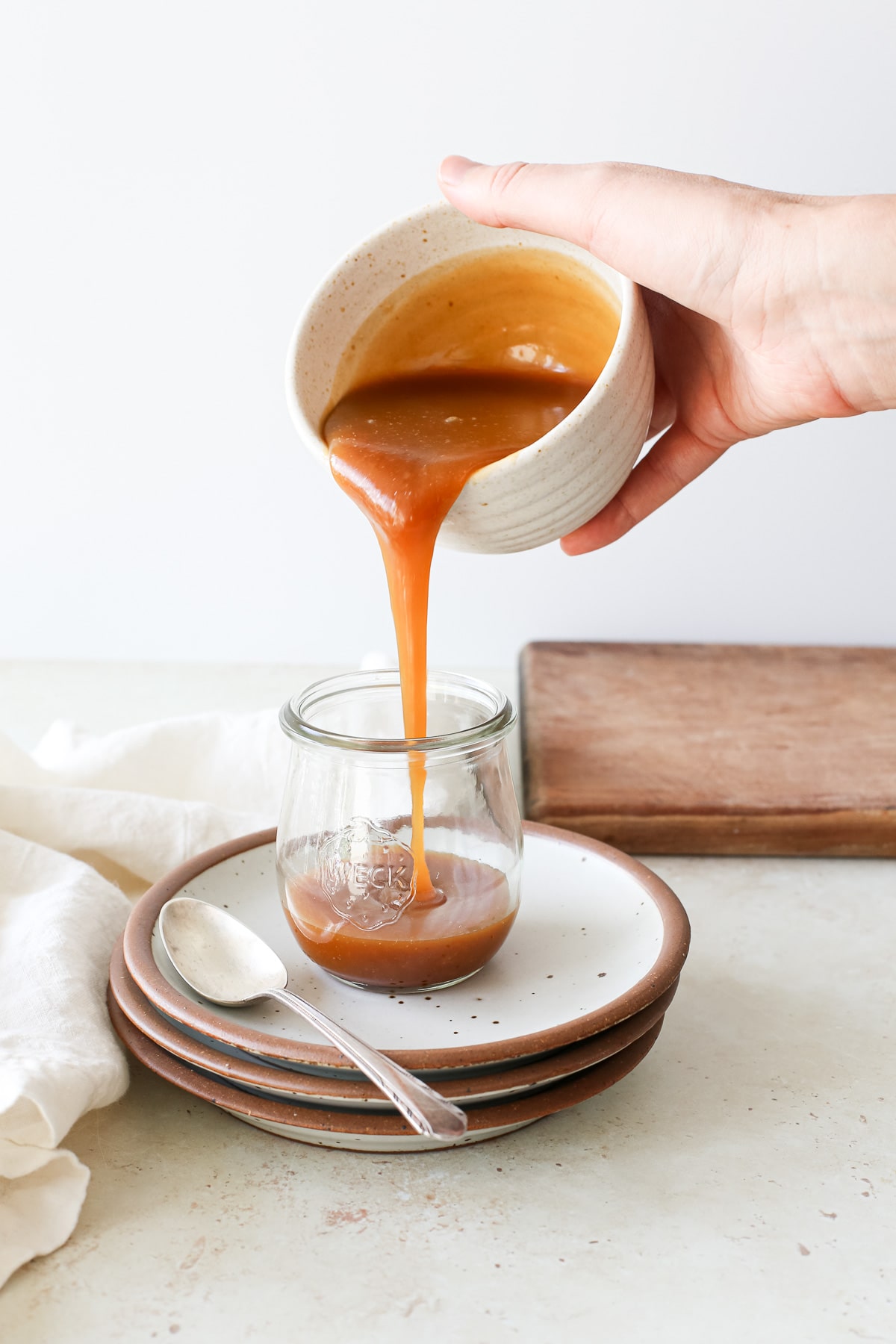
Homemade caramel isn’t nearly as intimidating as it’s made out to be, there’s just a lot of confusing information about the “best” way to make it. Like with anything, there’s more than one method to the madness.
With a few helpful tips, this miso caramel is nearly foolproof. If eaten warm, it’s more of a miso caramel sauce with a pourable consistency that can be drizzled on vanilla ice cream, waffles, baked apples with oatmeal, apple crisp, and peach galette. When chilled, it has a thicker consistency that can be eaten straight off the spoon or used as a dip.
Making Caramel: Wet Method vs Dry Method
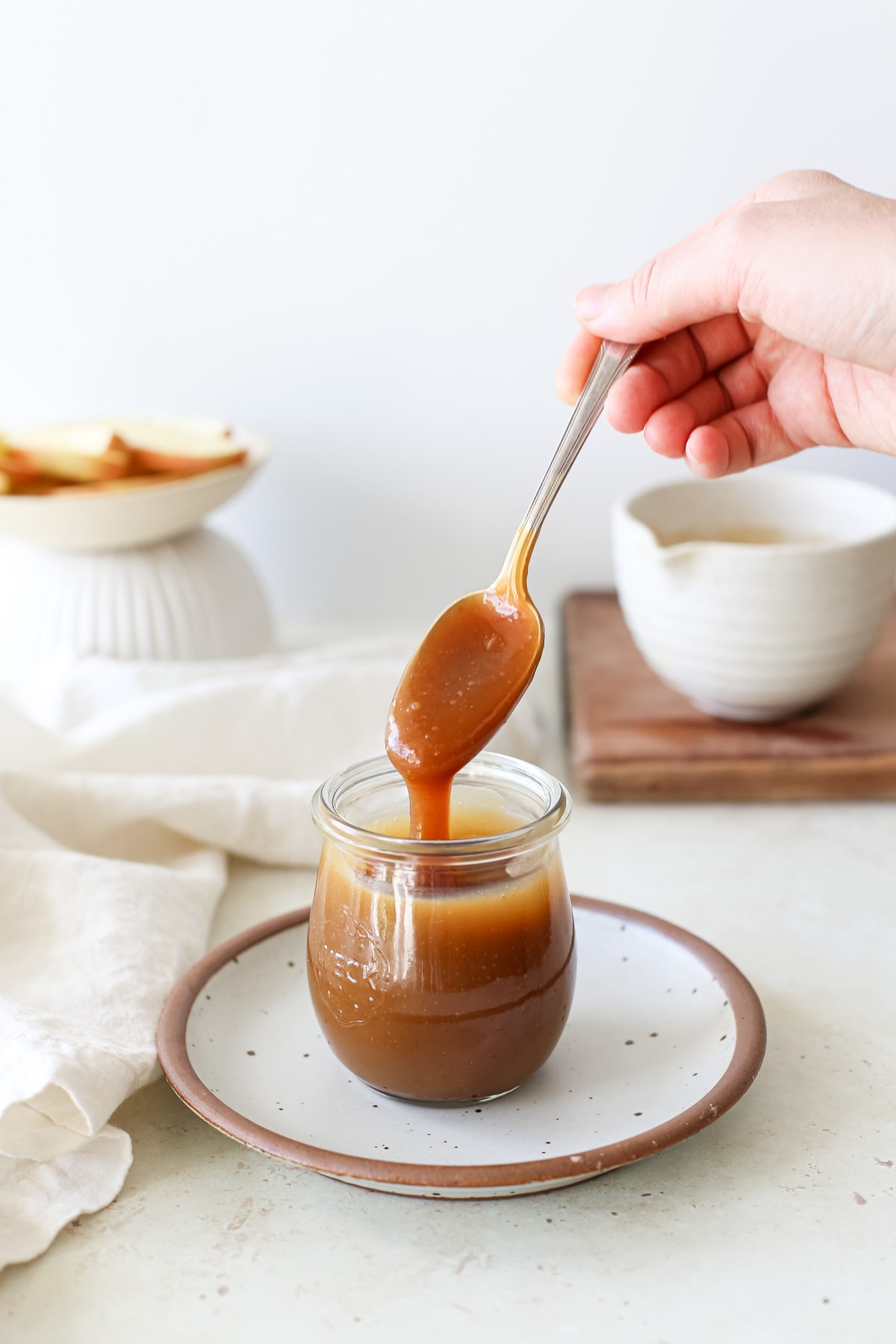
When it comes to homemade caramel, there are two methods: wet and dry. For this particular recipe, we’re using the wet method. But here’s how the two differ.
Wet Method
The wet method is made by heating granulated sugar and water together. The addition of water helps the sugar heat more evenly and prevents the sugar from burning making it ideal for homemade caramel novices. Although it takes a bit longer to cook off the water, this approach is more hands-off. You don’t stir the caramel at all in the process, just brushing water on the sides to prevent the sugar from crystalizing, and then swirling the pan to even the caramelization.
Dry Method
The dry method is made by heating granulated sugar in a pot until it melts. As soon as you see the sugar crystals start to caramelize, you have to stir them around in the pot so that some don’t caramelize faster than others. Although this method is quicker than the wet method, you run the risk of burning the sugar due to hot spots in the pan, which means there’s very little room for error.
Ingredients
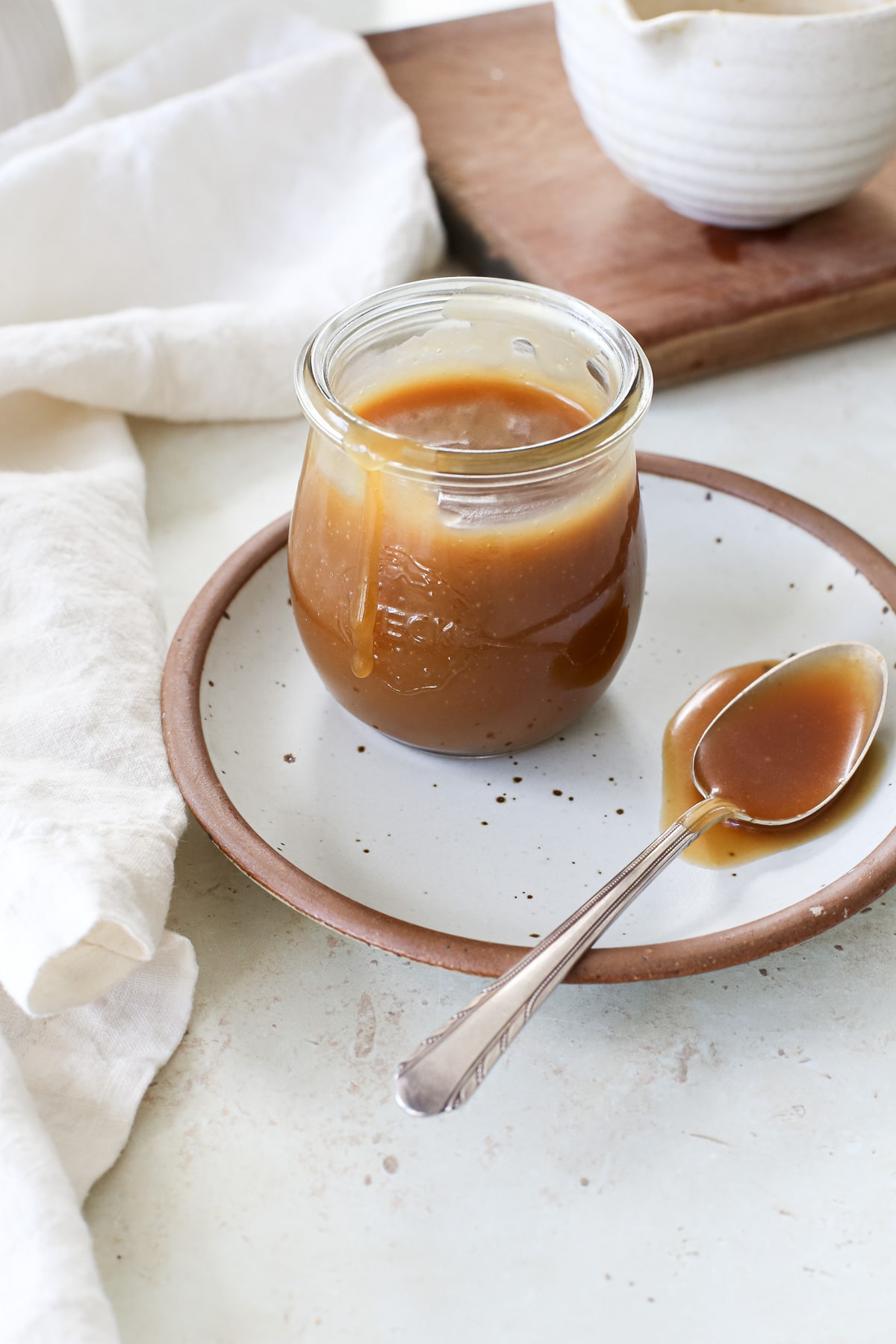
- Granulated sugar – when making caramel, you have to use either white granulated sugar (also called caster sugar) or organic cane sugar so you can see the transition of colors as it caramelizes.
- Water – helps the sugar cook more evenly.
- Unsweetened coconut cream – gives the caramel a thick, creamy, silky-smooth texture without any coconut taste. To easily scoop out the cream, stick a can of full-fat coconut milk in the fridge for a couple of hours. When it solidifies, the cream will rise to the top.
- White miso paste – a fermented paste made from soybeans that’s typically used in savory dishes, but adds a salty, umami, irresistibly complex flavor that balances out the sweetness of the caramel.
How to Make Miso Caramel
Step 1. Add the granulated sugar and water to a small saucepan (with a heavy bottom) over medium heat. Move the pan around so that all the sugar is hydrated, then use a wet pastry brush to brush the sides of the pan around the edges to prevent the sugar from crystallizing.
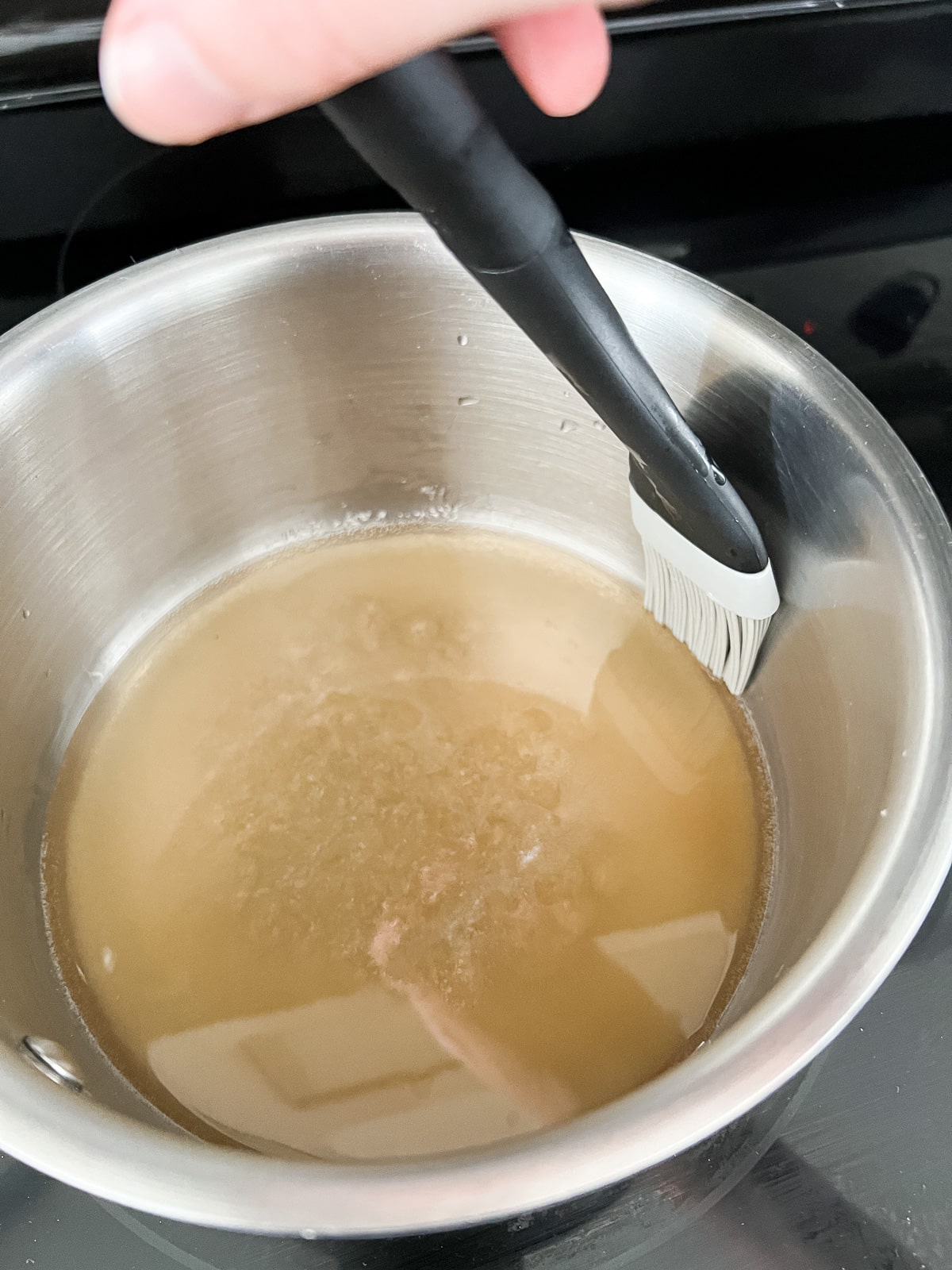
Step 2. Don’t shake, swirl, or stir. It takes a few minutes for it to start boiling. When you see bubbles, brush the edges with water again to prevent crystallization. When the sugar water turns a light golden brown color, turn down the heat to medium-low. The caramelization is about to happen and when it does, it goes quickly.
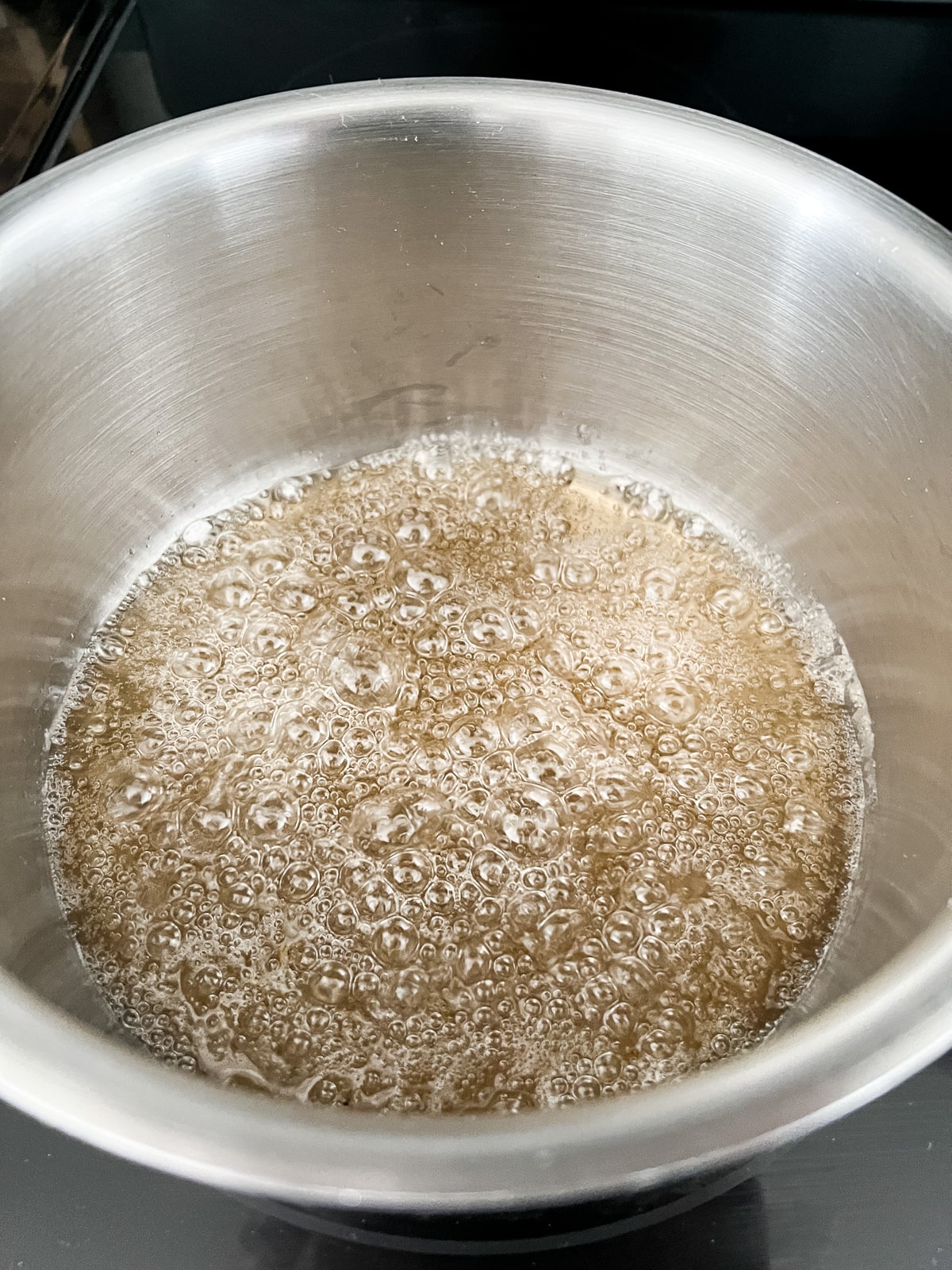
Step 3. Gently swirl the pan a few times to evenly distribute the browning. As the color turns amber, remove it from the heat.
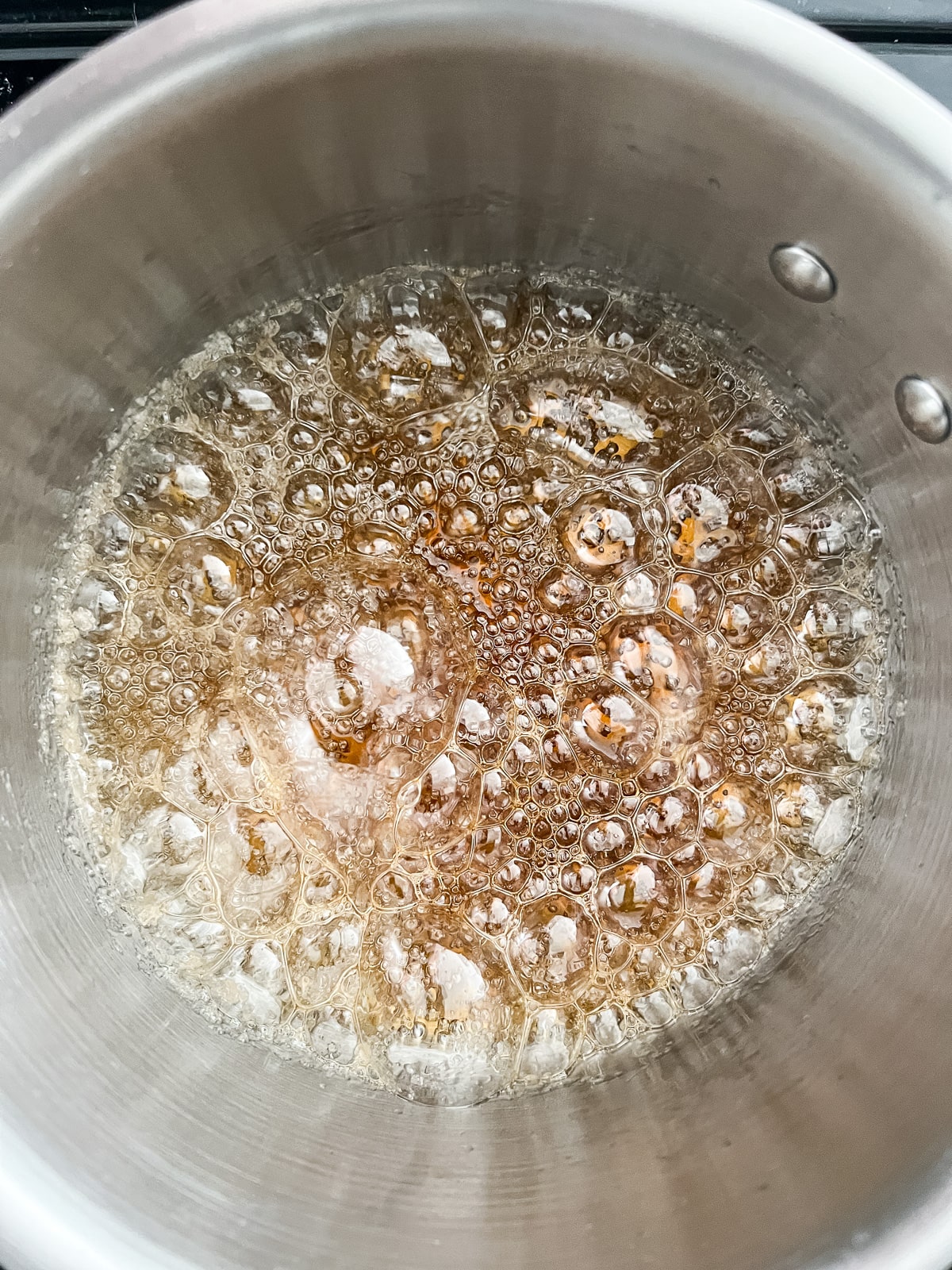
Step 4. Slowly pour in the cream while continuously whisking (be careful – it may steam and spit bubbles). Then place the saucepan back on the stove over low heat and whisk in the miso paste until smooth.
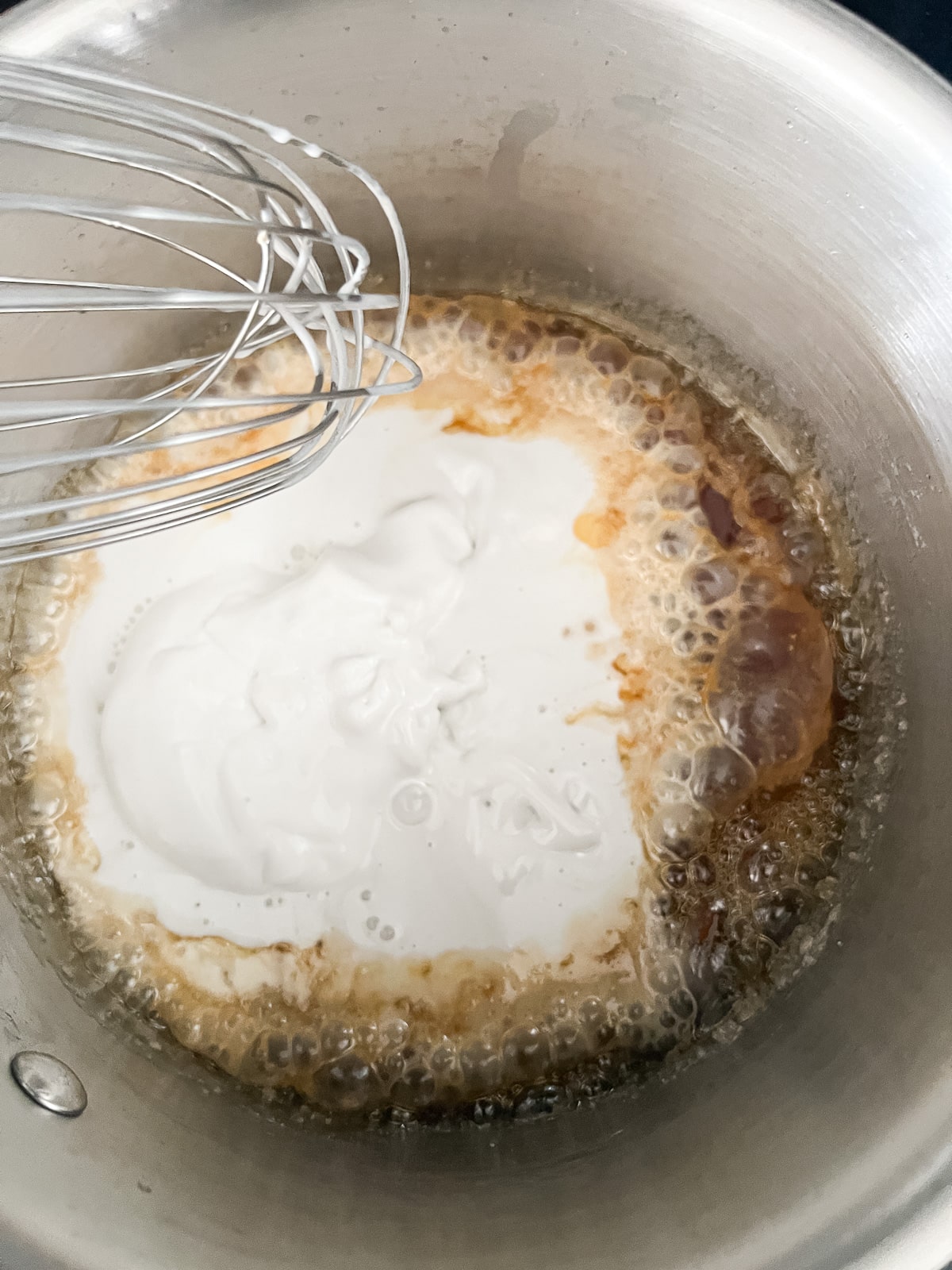
Step 5. Pour the caramel into an airtight container or jar and let it cool to room temperature before adding a lid and storing it in the fridge. It will thicken and firm up as it cools.
Make It Your Way: Substitutions & Variations
Please remember that recipes are just a starting point.
How can you make this miso caramel using what you already have? Here are some ideas…
- No white miso paste? – If you don’t have any miso paste, use regular salt in its place. A healthy teaspoon of diamond crystal kosher salt (reduce by half if using another type).
- Use another type of miso – there are several different types of miso. You can use yellow or red miso to give the caramel an even more complex flavor.
- Not dairy free? – sub heavy cream in place of the coconut cream.
- Add-ins – 1 tablespoon unsalted butter (vegan butter or regular) for an even richer flavor.
Variations
- Miso butter – use in place of the miso for a more buttery flavor.
- Vanilla – add vanilla extract for more flavor
- Chocolate caramel – add 1-2 tablespoons chocolate chips at the end when you add in the miso over low heat until melted and smooth.
Helpful Tips
To separate coconut cream from the milk, stick a can of full-fat coconut milk in the fridge for a couple of hours. When it solidifies, the cream will rise to the top.
Resist the urge to stir. Because this recipe uses the wet caramel method, stirring the sugar and water will cause the sugar to crystallize and give it a gritty texture, so no stirring during the caramelization process.
Remove from the heat before you add the cream. If you add the cream when the heat is still on, you risk experiencing a bubbling hot caramel volcano.
Use warm cream. This will help prevent the caramel from seizing up. If it happens though, place the pan over low heat to become smooth again.
Use light-colored sugar. Don’t use a dark sweetener such as maple syrup or brown sugar. It’ll be too hard to decipher the change in color and you’ll risk burning the caramel.
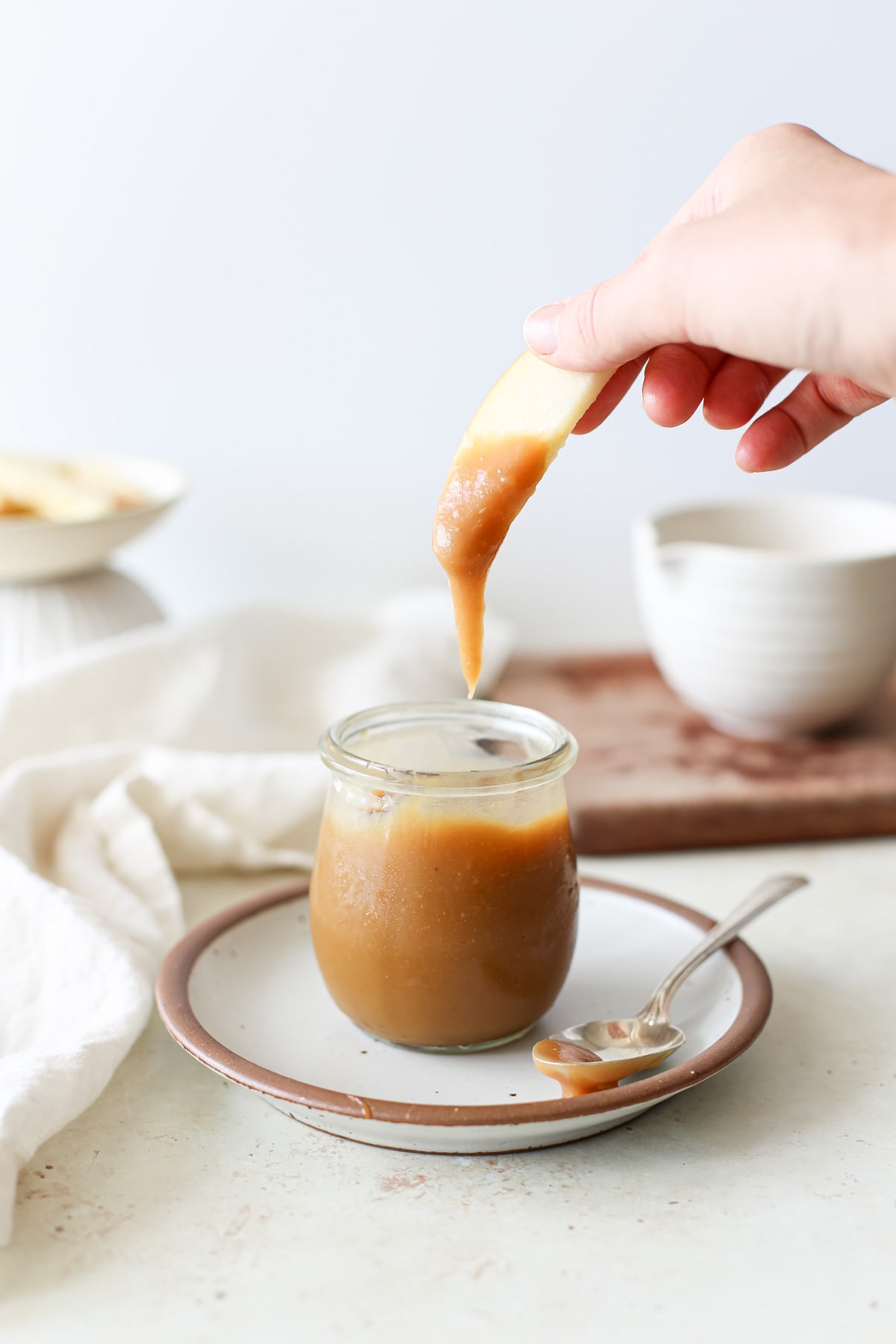
Frequently Asked Questions
No, just use a light-colored saucepan and your eyes to watch the changes in the color of the sugar.
If caramel is cooked too long, it’ll turn very bitter and is unsalvageable, so don’t walk away from the stove during the caramelization process.
More Dessert Recipes
Easy Miso Caramel Recipe (Dairy Free)
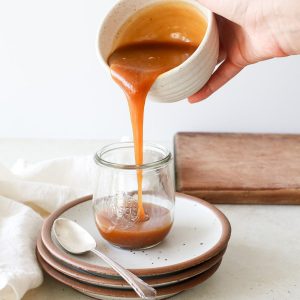
Ingredients
- ¾ cup granulated sugar
- ¼ cup water
- ½ cup unsweetened coconut cream see notes
- 2 tablespoons white miso paste
Instructions
- Add the granulated sugar and water to a small saucepan (with a heavy bottom) over medium heat. Move the pan around so that all the sugar is hydrated, then use a wet pastry brush to brush the sides of the pan around the edges to prevent the sugar from crystallizing.
- Don't shake, swirl, or stir. It takes a few minutes for it to start boiling. When you see bubbles, brush the edges with water again to prevent crystallization. When the sugar water turns a light golden brown color, turn down the heat to medium-low. The caramelization is about to happen and when it does, it goes quickly.
- Gently swirl the pan a few times to evenly distribute the browning. As the color turns amber, remove it from the heat.
- Slowly pour in the cream while continuously whisking (be careful – it may steam and spit bubbles). Then place the saucepan back on the stove over low heat and whisk in the miso paste until smooth.
- Pour the caramel into an airtight container or jar and let it cool to room temperature before adding a lid and storing it in the fridge. It will thicken and firm up as it cools.

